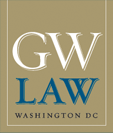
GW Law Faculty Publications & Other Works
Document Type
Article
Publication Date
2020
Status
Working
Abstract
The near half-century of the post-Mao era has almost universally been called one of construction of China’s legal system. But while great changes have taken place in China’s public order and dispute resolution institutions, other things have changed little or not at all. Most commentary focuses on the changes; this article, by contrast, will look at what has not changed—the important continuities that have persisted for over four decades.
This article argues that the scholarly community has accumulated over the past four decades a number of observations about China’s order maintenance institutions that are increasingly difficult to explain using the conventional vocabulary and concepts of legality. When we see inconsistencies, we tend to explain them as signs of the immaturity of the legal system, or as mistakes, or as unrepresentative aberrations. This kind of explanation is driven by a conscious or subconscious convergence theory.
But we have to take these inconsistencies seriously and come up with a theory does not require us to treat them as inconsistencies; a theory that treats them as features, not bugs. This article argues that China has been building a system for the maintenance of order and the political primacy of the Chinese Communist Party (CCP), not for the delivery of justice. It urges that we should not make ethnocentric assumptions about how various institutions in China—or indeed in any society with which we are not familiar—do or should operate merely on the basis of similarity of (translated) name or apparent isomorphism. If too many observations don’t fit the model, then it’s time to change the model, not to dismiss the observations.
The argument presented here—that we should look beyond the “rule of law” model as the sole way of analyzing and measuring a society’s order maintenance institutions—has implications for our understanding of authoritarian governance beyond just China. It is still customary to view authoritarian, non-democratic states as being on a spectrum from no rule of law at one end, perfect rule of law at the other, and “rule by law” in the middle. And to the extent they are reasonably stable and have institutions that look like familiar legal institutions, “rule by law” is how they tend to be characterized.
But “rule by law” turns out to be a thin and unsatisfactory concept: a poor man’s rule of law. Applying this label amounts to saying not much more than that the institutions in question don’t measure up to the rule-of-law standard. We must learn to look for the apparent outliers, the errors and imperfections, and to ask ourselves whether they can be incorporated into a different paradigm that treats them as normal and expected. We might well find that the variety of human institutions is far richer than we had imagined.
GW Paper Series
2020-52
SSRN Link
http://ssrn.com/abstract=3682794
Recommended Citation
Clarke, Donald C., "Order and Law in China" (2020). GW Law Faculty Publications & Other Works. 1506.
https://scholarship.law.gwu.edu/faculty_publications/1506
